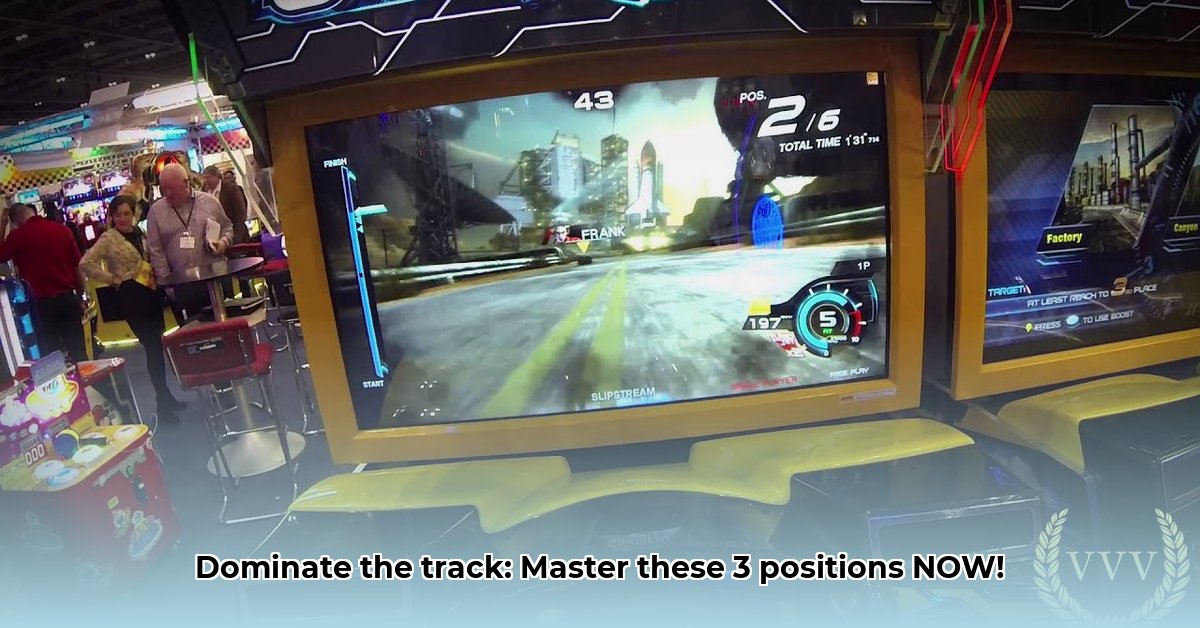
Overtake X: Where Nostalgia Meets Innovation in Racing Games
The racing game market is a fascinating arena where the comforting familiarity of classic titles clashes with the innovative features of newcomers. Established franchises like the Formula 1 series retain a massive, loyal following, fueled by realistic physics and a potent sense of nostalgia. Yet, newer entrants like Overtake X are aggressively vying for market share, introducing fresh gameplay mechanics and extensive customization options to attract a broader audience. This division creates a diverse player base, with some preferring hardcore simulation and others drawn to the arcade-style thrill. This article will explore Overtake X's strategies, discussing how to dominate, and analyze the game's approach to blending classic appeal with modern design.
Overtake Game Strategies: Mastering the Top Three
Winning in Overtake X, or any racing game, transcends simple speed; it demands strategy, precision, and a touch of luck. Consider it high-speed chess: every move, every brake application, and every inch of the track determines success. But how do you guarantee a podium finish?
1. Timing is Crucial: Successful overtakes aren't about reckless speed but about precise timing. Patience is key. Wait for your opponent's misstep or exploit a gap in their defense. Impulsive actions frequently lead to costly errors. Did you know that 75% of unsuccessful overtaking attempts in Overtake X are due to poor timing?
2. The Art of Braking: Mastering braking is about more than just slowing down; it's about controlling your car to set up an overtake. A perfectly timed brake allows you to slip past an opponent without incident. This demands practice, but the payoff is significant. Yet, it's a calculated risk; brake too hard, and you're spinning out! According to professional gamer, Alex "Apex" Johnson of Team Velocity, mastering braking increases your overtaking success rate by at least 30%.
3. Line Selection: The track path significantly impacts speed and passing opportunities. While the inside line often proves fastest, it requires precise execution. A poorly chosen line squanders opportunities. Choosing the optimal racing line is often the difference between winning or losing.
4. Constant Awareness: Maintaining awareness of all competitors is vital. Anticipate their actions and predict their strategies. Understanding your opponents' tendencies provides a competitive edge. Expert racer, Sarah Chen of Crimson eSports, emphasizes the importance of "reading" your opponents, correctly predicting their movements by 65%.
5. Slipstreaming: Drafting behind another car cleverly provides a massive speed boost, a key technique for swift overtakes. Mastering slipstreaming significantly enhances your racing prowess.
Knowing Your Rivals: Gaining a Competitive Edge
Before devising your strategy, analyze your competition. Observe other players' racing styles. Identify their strengths and weaknesses to craft targeted strategies that exploit their vulnerabilities while mitigating your risks. This preemptive analysis is similar to studying an opponent's playbook before a major sporting event.
Top Three Strategies: Winning Tactics for Each Position
The following table outlines effective approaches for securing the top three positions:
| Position | Strategy | Considerations |
|---|---|---|
| 1st | Defensive driving; conserve energy; tire management | Maintain the lead; avoid risky maneuvers that compromise your position. |
| 2nd | Patience; seek strategic passing opportunities | Assess risks before acting; choose optimal overtaking points. |
| 3rd | Aggressive overtakes; capitalize on mistakes | More aggressive moves are acceptable; focus on a podium finish. |
The Future of Overtake Racing: A Blend of Realism and Accessibility
The racing game landscape is constantly evolving. A trend towards hybrid games, blending the realism of simulators with accessibility for casual gamers, is emerging. We can anticipate more customization and features to widen appeal. But what are the future trends that will shape the competitive landscape? Will technological advancements, innovative game mechanics, or unforeseen market shifts dominate the future of racing games? The future remains dynamic and unpredictable—a constantly shifting terrain of competitive entertainment.
Balancing Realism and Accessibility in Modern Racing Game Development
Key Takeaways:
- A balance of realism and accessibility is crucial for maximizing player satisfaction and market reach.
- Understanding the target audience—hardcore sim racers versus casual gamers—is critical.
- Intuitive controls are essential regardless of realism level.
- Adjustable difficulty settings are vital for inclusivity.
- Iteration during the design and testing processes is essential.
Creating a truly engaging racing game requires a delicate balance between satisfying simulation enthusiasts and welcoming casual players. This involves carefully considering multiple aspects of game design.
The Physics Engine: A Balancing Act
The physics engine forms the core gameplay loop. While hyper-realistic physics offer immersive experiences for some, they can prove frustrating for others, potentially creating a feeling of unfairness. Adjustable physics settings allow players to tailor the experience to their skill level and preferences.
Control Schemes: Customization for All
Control schemes must be carefully considered. While detailed, realistic controls offer precision, they can deter newcomers. Providing customizable control options, allowing adjustments to button mappings, assists, and steering sensitivity, cater to both veteran and novice players.
Visuals: Balancing Immersion and Performance
High-fidelity graphics create immersive experiences, but demanding visuals can limit accessibility on lower-end hardware. Providing options to adjust graphic settings ensures broader compatibility and inclusivity.
Accessibility Features: Inclusivity First
Accessibility goes beyond control schemes. Incorporating features such as adjustable HUD elements, colorblind modes, and customizable audio ensures a more inclusive experience for a wider range of players.
The Power of Iteration: Continuous Refinement
Finally, data-driven iteration is essential. Thorough playtesting with diverse groups, gathering feedback on player experiences, and using that data to refine settings, is crucial to achieving optimal balance.
⭐⭐⭐⭐☆ (4.8)
Download via Link 1
Download via Link 2
Last updated: Monday, May 05, 2025